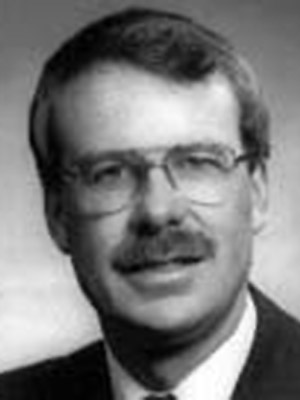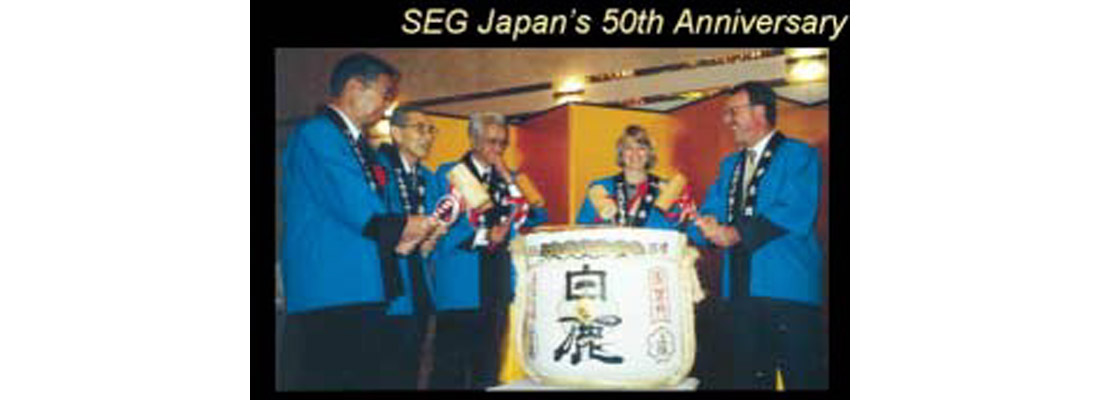
I must admit that I had mixed feelings when asked to write an article for a compendium entitled “Lives of Successful Geophysicists”. For one thing, I can see all my friends saying: “Who the heck does he think he is!” Secondly, virtually every geophysicist I know is successful, so why not get everyone to submit an article? I finally decided to put pen to paper (yes, I still prefer the old-fashioned way of writing a first draft) in the belief that some of the steps along the way of my twisting and turning career may be of interest to others, especially those who are just starting out.
Academically, my first love was physics, and I entered the physics program at the University of Saskatchewan in 1969 intending to pursue a four-year honours program in that subject. The first two years were fine, but by the middle of third year I realized that I was getting way too much physics, way too fast! Luckily for me, the University of Saskatchewan offered a three-year degree in those days, so I finished the year, took my degree, and went off to a remote part of Zambia with CUSO to teach high school math and physics at Kenneth Kaunda Secondary School. My two years in Africa were to change my life. I developed a lifelong love of traveling and experiencing new cultures, of teaching, and I also decided to switch from pure physics into geophysics.
Returning to the University of Saskatchewan, I enrolled in the geophysics program, where I received large doses of geology and learned my geophysics from Don Gendzwill and Zoly Hajnal. I enjoyed geophysics enough that, upon finishing my B.Sc., I signed up to do my Master’s degree with Dr. Hajnal. However, my friend Bill Davitt had other plans for me, and enticed me to work at Chevron as an interpreter for the princely sum of $1200 per month (Will you ever forgive me, Zoly?). Elaine and I also got married that year, so the salary did come in handy.
Chevron was a great place to learn, and I did a lot of bird-dogging and interpretation during my first few years there. However, I was still restless, and so I decided to go back to University to do my M.Sc., this time choosing the University of Durham in England. I chose Durham since it had an excellent one-year Master’s program and is also close to my mother’s hometown. Although Chevron gave me a one-year leave of absence, it was a little scary since I was unfunded and Elaine and I had to live on our savings for a year. By this time, we also had a one-year-old daughter, Michelle. (Did I mention how lucky I have been to have a lifelong partner who supports me in all my insane schemes?) After completing my Master’s, I returned to Chevron and switched to seismic processing and research, working in both Calgary and Houston for Chevron Geosciences. (By this time our son David had been born, so I felt it was time to stick to the job market!) This also confirmed that the quantitative side of the business was my main interest. During my time in Houston, I worked with a great group of people, including Rutt Bridges, Don Paul, Vern Herbert and Francis Muir (he was actually in La Habra, but I still was able to learn a lot from him). It was there that I developed a real love for seismic processing and inversion concepts.
The experience I gained with Chevron was invaluable but, for a variety of reasons, I decided to leave in 1981 and join Roy Lindseth’s company, Tecknica Resources Ltd. Roy was a great mentor to me, and I learned a lot about seismic inversion from him. However, my stay at Teknica was once again destined to be short. One year later Larry Fichtner offered me a job as Training Manager at Veritas. This was too good to turn down, since it appealed to my love of teaching and also gave me an opportunity to work with Dan Hampson in the research department. I discovered that Dan and I made a great team, and enjoyed working with him on new developments like INVEST, GLI3D, and maximum-likelihood inversion. (However, I’m not taking any credit for developing these ideas, only in helping to test them and educate people about them.)
Fate again intervened in the guise of the oil market crash of the mid 80’s and I suddenly became part of a new company that had been spun off Veritas Seismic in order to turn a profit, a company called Veritas Software. It was to be a short-lived company, but what a great place to learn and what a great group of geoscientists! Dan and I were privileged to work with Mike Galbraith, Rob Stewart, George Palmer and Rick Wallace, as well as Kim Andersen and Nic Martini, who are both still at Hampson-Russell. We learned the business of writing and selling software programs the hard way, by just doing it. And we discovered that it was a very dynamic and rewarding business. I felt that I had found the career that I had been training for all my life, although you can definitely say that I had stumbled into it!
The rest is, as they say, history. In 1987, Dan and I decided to venture out on our own, forming Hampson-Russell Software Services Ltd. It has been a great ride since then, and our company has grown from four employees to forty, with offices in Calgary, Houston, London, and Jakarta. But, at the heart of it is still the passion that we have for creating new seismic technology. Dan and I have also benefited from having a fantastic group of co-workers, and have built up a truly family-like environment. There has been a lot of luck involved, as well. For example, we started off just as the personal workstation revolution was starting, and just as oil companies were changing from massive, in-house, main frame-based systems, to off-the-shelf vendor-supplied software. And we guessed right by getting into AVO in its early days.

Along the way, I have also been very involved with both the CSEG and the SEG, serving on various convention and editorial committees (such as the 1989 Exploration Update Convention in Calgary, the Leading Edge Board, and the 1998 SEG Convention in Denver) and executive committees (second Vice President and President of CSEG, and, ironically, second Vice President and President of SEG). I appreciate the opportunity to serve our societies, and am proud of the legacy of internationalism that I helped strengthen at the SEG. I heartily encourage everyone to volunteer his or her time to either the CSEG or SEG. The friendships you make will last a lifetime.
So, what lessons have I learned along the way, and would like to pass along? First, and foremost, follow your interests. Don’t get into this business unless you really enjoy the subject. Second, don’t be afraid to change directions from time to time. As Yogi Berra said, “When you come to a fork in the road, take it!” Third, become involved with the community of geoscientists, either at the local or international level. This can be done by joining professional organizations, helping at science fairs, conventions, or workshops, or in countless other ways. Last, but not least, just enjoy the ride! Geophysics is one of the great careers in the world, combining science, business, marketing, travel, and providing a pretty good living. I would not have changed one minute of my life. I leave you with one of my favourite pictures from my time as SEG President, the ritual opening of the sake barrel at the 50th anniversary of SEG Japan. It brings back some great memories.











Join the Conversation
Interested in starting, or contributing to a conversation about an article or issue of the RECORDER? Join our CSEG LinkedIn Group.
Share This Article